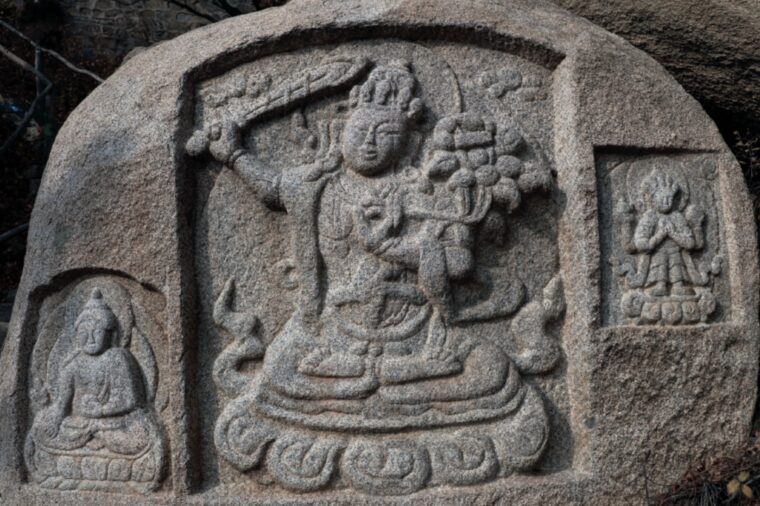Do you feel lost when entering a Buddhist exhibition? Don’t worry. In this scaffolded and guided space, you will be able to:
1) learn Buddhist ideas; 2) get an immersive meditation exercise through guided prompts; 3) have a moment of silence while surrounded by Buddhist statues.
Throughout this semester, I found inspiration through visiting various Buddhist and East Asian exhibitions at museums in New York City and the greater Boston area. I came into this project knowing not very much about the museum world. My course work this semester has led me to think in depth about museums as institutions.
As an institution, museum is a medium that is versatile and therefore reach the general public. Compared to the academic world where people generally write in cryptic language to a small number of audience, the museum world has a public-facing aspect that requires staff and curators to write in a way that is accessible to the general public. Therefore, I find museum the perfect medium to channel messages to a greater audience.
I first had the idea of creating a Buddhist exhibition when I was in Haitang Mountain in the northeastern part of China, where I encountered many Buddhist cave-cut sculptures in plain sight (featured in the square image). The peaceful feeling was indescribable in words, but could only be felt in the moment. After I left Haitang Mountain, I told my friends about the amazing scene that I had seen. I was sad that they were not able to see it due to practical reasons such as not being able to travel and so on. Therefore, I had the idea of reconstructing the site and bringing it to people — in the form of a museum exhibition.
I didn’t know that it was possible until I visited various museums that had ongoing shows featuring sacred Buddhist site and introducing key ideas in Buddhism. Here is the list of museums that I have visited this semester:
- Harvard Art Museums
- McMullen Museum of Art
- The Metropolitan Museum of Art
- Peabody Essex Museum
- Rubin Museum of Art
The exhibitions at the Rubin Museum and the Met were especially stimulating to me. The Rubin Museum created a traveling show with a wealth of information for educational purposes, which I found fascinating. I think the primary purpose of my museum exhibition is for education and facilitating learning for visitors about Buddhist ideas and themselves.
Although it is challenging to curate an exhibition in a project in this scope, my PCE project has served as a starting point for the experience that I wish to bring to a wider audience in the future.



